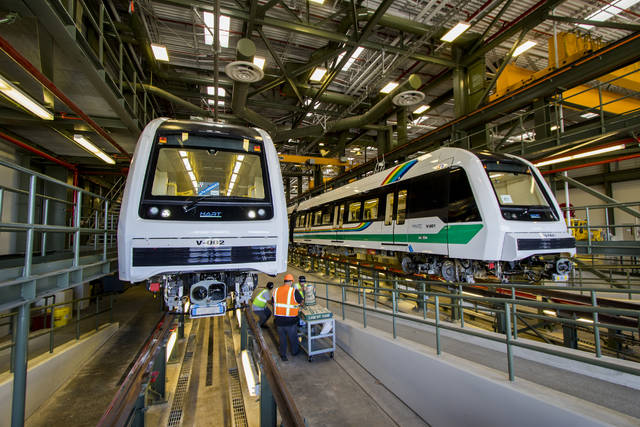It was a sizable relief when, in early September, state lawmakers supported a funding package to rescue Oahu’s rail construction from its latest cost overruns, and Gov. David Ige signed off on the $2.4 billion bailout for Hawaii’s largest public works project.
But less than two months later, questions are already rattling the recent swell of cautious support for the 20-mile transit line.
Last week, Honolulu Authority for Rapid Transportation (HART) acknowledged that a monthly report submitted to the semi-autonomous agency for August by Jacobs Engineering Group — a federal contractor serving as a rail watchdog — said it was “not confident” the total construction price tag will remain at $8.2 billion. The document was not released publicly until September — after the Legislature’s special session tailored to fund rail at precisely that cost figure.
In the report, Jacobs doubted whether the city will have rail ready to operate by its latest December 2025 deadline, and it flagged continued uncertainty over the project’s largest outstanding construction contract — the final 4.3 miles of guideway and eight stations. After languishing for nearly two years, its procurement was canceled in August, with HART opting to restart the selection process.
It’s unclear whether public scrutiny of the Jacobs report would have affected legislators’ decision-making. However, given the timing, if HART was anticipating such a report, it should have provided lawmakers with a heads-up before the vote at the state Capitol.
Immediately after the Sept. 1 vote, rather than breathing a sigh of bailout relief, Mayor Kirk Caldwell expressed misgivings — and did not rule out the daunting task of returning to state leaders for more help should funding fall short. Back in 2015, when the city secured its first bailout, HART leaders assured the public that the $1.5 billion package likely provided more than enough funding to finish rail.
Additional questions about rail-related spending emerged last week when the Federal Transit Administration said it never determined whether a proposed scaled-back alternative to Aloha Tower would have worked, instead of building the planned line to Ala Moana Center.
That so-called “Plan B” was proposed by rail officials in October 2016 as a way to potentially finish the project at the $6.8 billion available. But HART pitched it halfheartedly, noting that it could cause problems ranging from more construction delays to a 50 percent reduction in ridership. In an email, the FTA said it took a pass on “Plan B” because the city preferred construction to Ala Moana.
The FTA is slated to contribute $1.55 billion to Honolulu’s rail, pending its sign-off of HART’s financial recovery plan submitted in mid-September, so it was justified in asking for a “Plan B.” But failure to take a hard look at a proposal it had requested seems to add up to a waste of HART funds and resources.
Nearly nine years have passed since city voters supported the elevated rail project — with frustration over congested roads outweighing cost concerns. At that time, the controversial project was tagged at $4.28 billion, with plans for limited service to start in November 2013 followed by full service by the end of 2018.
Rail’s jarring price increases, which have nearly doubled in the past three years, are causing queasy unease even among project supporters. Under the leadership of Andrew Robbins, HART’s new executive director, the focus must be holding to the current $8.2 billion budget.
Responding to the Jacobs report, Robbins said its scheduling doubts are being addressed with a new strategy. Initially, the bulk of rail’s costly utility relocation work was included in the delayed, hefty City Center guideway and stations contract; now HART plans to bid the utility work under a separate contract and start the work in March. Whether this is a true course correction remains to be seen. With ongoing credibility questions over financial projections and disclosure of reports, HART must redouble efforts to articulate an improved
“on-time and on-budget” strategy.

